






Retention is Everyone’s Job
While HR teams face constant challenges recruiting and hiring new employees, retaining their top talent is something organizations can’t afford to ignore. With a record-breaking 4.5-million employees quitting their jobs in November 2021 alone, the Great Resignation has shown no signs of slowing down.
Although HR teams significantly impact talent retention, most employees and teams organization-wide can help reduce turnover and boost employee engagement. In this post, we’ll explore how different departments and team members at every level can affect employee retention, plus provide clear examples of ways employers can prioritize the workplace to retain talent.
Who is responsible for employee retention?
How Human Resources affects employee retention
Recruiters and talent acquisition specialists
While it might seem counterintuitive to consider retention before the employee has even started, a prospect’s hiring and onboarding experience can have a lasting impact on their overall engagement levels and desire to stay with a company in the long run.
Talent acquisition specialists need to make sure they’re setting clear expectations around the role and the business when it comes to recruiting. For example, if an employee is hired into a senior graphic design role and once they begin, discover it’s a more junior position than they expected, they aren’t likely to feel super engaged in the work. They’ll probably start seeking other positions elsewhere as soon as possible — and your recruitment team will be back to the drawing board.
In addition to setting clear expectations for the role, the talent acquisition team must do their best to provide a positive onboarding experience for all new employees. The onboarding process should set new team members up for success and cover everything from the employee’s role to the organization’s culture. Whether you’re welcoming a new leader to the company or hiring a talented intern, onboarding sets the tone for the employee’s experience.
Employer brand departments

For example, if you’ve ever seen a LinkedIn post where a connection is sharing how excited they are about their company’s new and improved parental leave or unlimited vacation policy, an employer brand team is most likely responsible.
When it comes to retention in a candidate-driven job market, offering a competitive benefits package helps other opportunities look a lot less tempting to your current staff. While you might think ping pong tables and free snacks are enough to keep your workers satisfied, a survey from Glassdoor found that companies (unsurprisingly) should instead focus on enhancing these top five benefits:
- Health insurance
- Vacation days and paid time off
- Bonuses
- Paid sick days
- 401(k), retirement plans and pensions
Another great way to find out what types of benefits and perks your employees value? Ask them! A collective intelligence tool like ThoughtExchange can facilitate group decision-making so you can find out exactly what team members across the business want in their benefits and compensation package.

People and culture partners
Although the goal is always to retain as many top employees as possible, exit interviews can significantly help reduce future turnover rates. By helping conduct exit interviews, people and culture partners can figure out exactly why employees are leaving the organization. They can then take this data, analyze it, observe patterns, and share it with senior leaders who have the authority to act on it and make changes.
For example, if a sales department saw a higher-than-average turnover rate in the last six months, the people and culture partners can use the exit interviews of these employees to find out why. Here, they may discover that the manager is ineffective or that the department’s unattainable targets are putting undue stress on the team. From there, they can present this information to the appropriate leaders in the business who can make the necessary adjustments.
By simply finding out why employees leave the company, organizations gain valuable insight that can undoubtedly help boost retention. It's only in acting on that insight, though, that will help retain employees in the long run.
While exit interviews may help, you’ll want to act before an employee decides to leave.
How peers and teammates affect employee retention
While we might not be spending as much time in the office as we did pre-COVID, our relationships with those we work with can still impact overall employee satisfaction and retention rates.
According to Gallup polling, employees with a best friend at work are seven times as likely to be “engaged in their jobs, are better at engaging customers, produce higher quality work, have higher well-being, and are less likely to get injured on the job.”

With this in mind, existing employees can play a part in lowering attrition rates by making an effort to reach out to new employees, or set up informal coffee chats (whether over Zoom or safely in-person). By proactively building relationships with coworkers, employees can also enjoy all of the benefits of having rich social networks at work.
In contrast, it’s important that employees remain positive when chatting to coworkers. While it’s natural to vent about minor annoyances occasionally, a colleague who constantly complains can impact morale and engagement.
If an employee repeatedly hears company criticism, chances are they’ll adopt some of this pessimistic attitude. However, it’s important to note here that this is also an opportunity for managers and HR teams to uncover legitimate employee pain points and work to address them. Collectively, addressing negative employees and getting to the root of their complaints can help improve retention rates across organizations.
How managers affect employee retention
You’ve likely heard that employees don’t quit bad jobs; they quit bad managers. An employee’s direct manager has a huge impact on their working experience and overall engagement. According to a recent report from Udemy, nearly half (48 percent) of US-based employees surveyed say they have quit a job due to a bad manager.


- Implementing and maintaining regular one-on-ones: Rather than only providing feedback in annual or semi-annual performance reviews, managers can increase employee engagement by setting up weekly one-on-ones where they share actionable feedback with their reports. This provides an opportunity to set and evaluate the employee’s goals and growth progress, plus discuss any other issues as they come up.
- Celebrating employee wins: According to a recent survey conducted by Workhuman, team members who are thanked for their work and received positive recognition are half as likely to be looking for a new job. By simply thanking employees for their contributions and celebrating team wins, managers can significantly help with employee morale and overall engagement — while reducing the turnover rate.
How the CEO affects employee retention

CEOs are responsible for defining a company’s culture and acting as role models for the organization’s values. As employees will look to the CEO for inspiration, business leaders must lead by example. A CEO who lacks leadership skills will not be effective at inspiring, motivating, or engaging their employees, which, as shown above, can lead to higher turnover rates.
With research from Glassdoor finding 65 percent of employees stay in their jobs due to alignment with the company’s culture, it’s important for CEOs to clearly and confidently share the organization’s missions, values, and goals. By inspiring a culture that employees genuinely believe in and find motivating, CEOs help retain their industry’s top talent.
In today’s evolving work environments, talented and productive employees are the key to business success. With 77 percent of employee departures being preventable, numerous individuals and teams across the organization have the opportunity to address employee and coworker pain points before they become a more serious problem.
Contact us to find out how ThoughtExchange can help you retain top talent.



